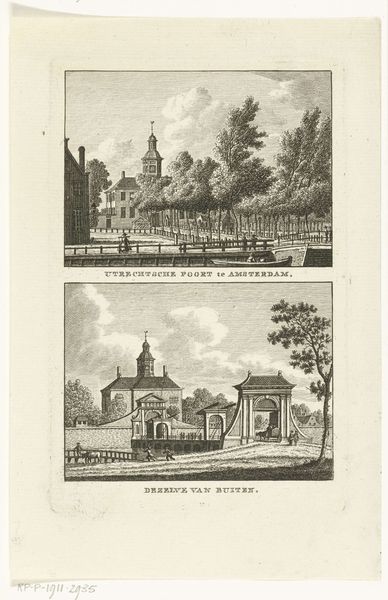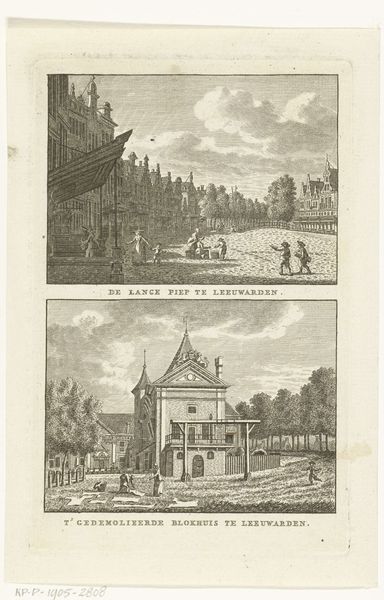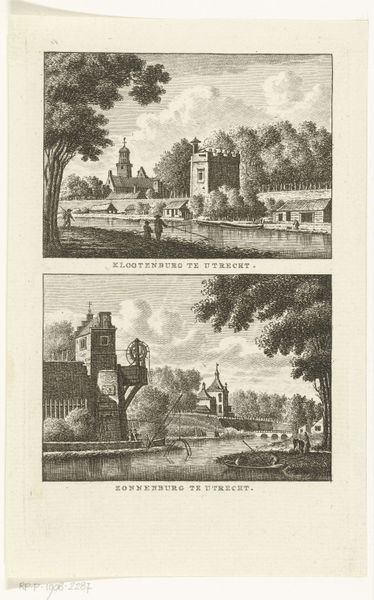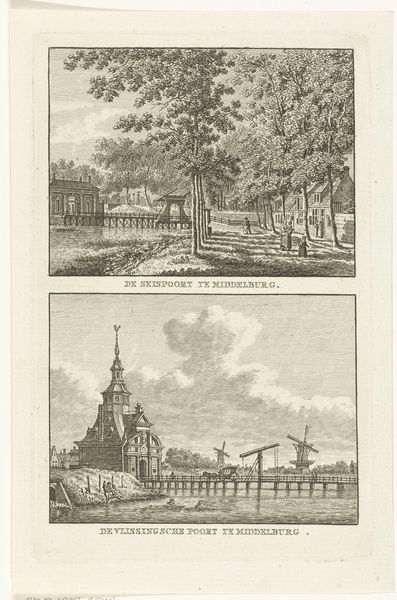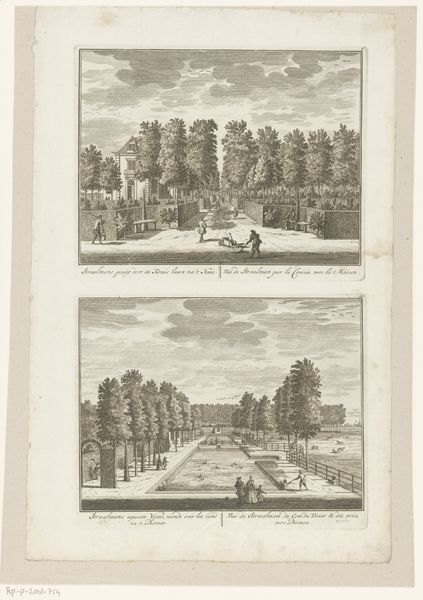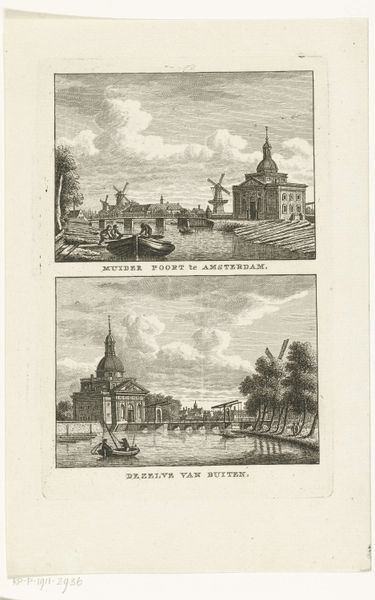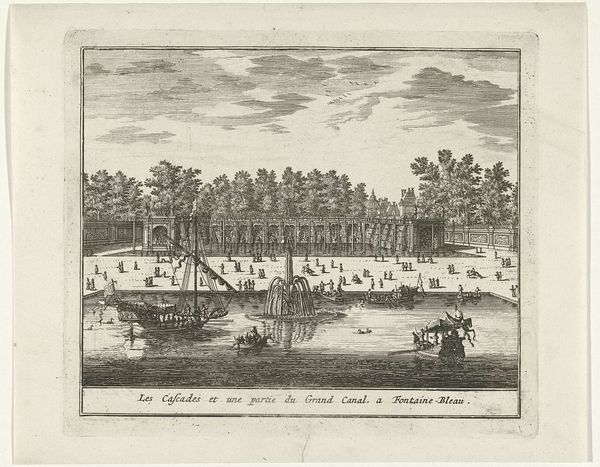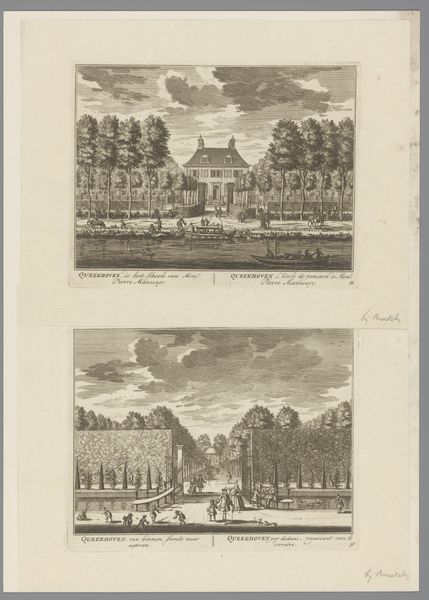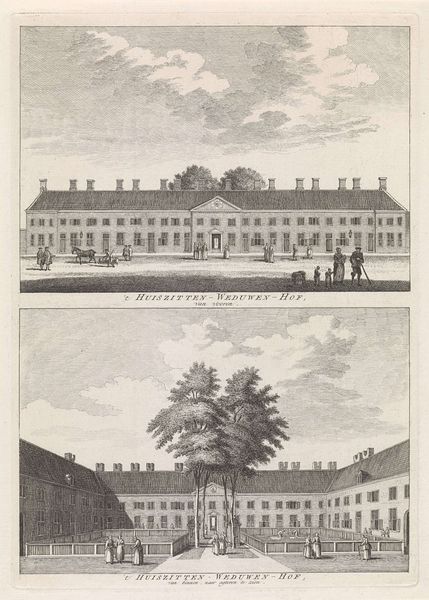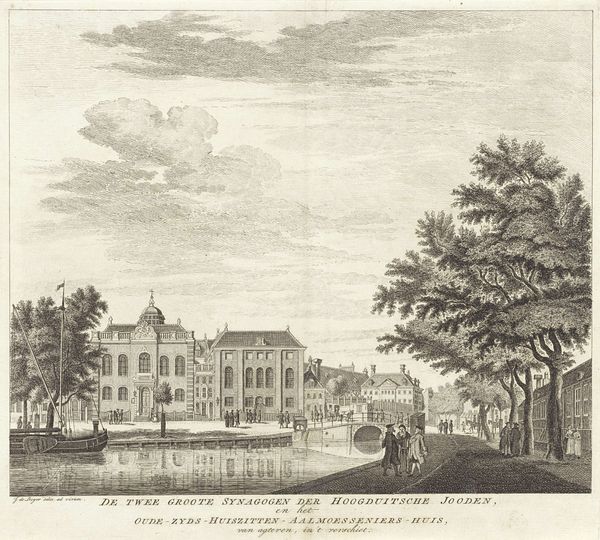
Twee stadgezichten te Middelburg: Koepoort en Noordpoort 1786 - 1792
0:00
0:00
carelfrederikibendorp
Rijksmuseum
print, engraving
#
neoclacissism
#
dutch-golden-age
# print
#
landscape
#
cityscape
#
engraving
Dimensions: height 169 mm, width 111 mm
Copyright: Rijks Museum: Open Domain
Curator: At first glance, these prints, “Twee stadgezichten te Middelburg: Koepoort en Noordpoort” (Two city views of Middelburg: Koepoort and Noordpoort), create a calming symmetry with their placement in the frame. The visual harmony pulls me right in. Editor: It does possess a certain understated tranquility, doesn't it? It’s interesting how seemingly straightforward depictions of architecture can evoke such stillness, despite the undercurrents of power inherent in cityscapes. Curator: The artist, Carel Frederik Bendorp, created this engraving sometime between 1786 and 1792. The buildings become symbols of civic identity and pride in a way that is clearly Neoclassical. Look at the rounded architecture; it embodies concepts like order, reason, and progress central to the enlightenment. Editor: I see how the clarity of line work is representative of a social moment but I’m wondering how these particular gateways shaped the city. Middelburg held a position in global trade—were these gates checkpoints of control, dictating who and what entered? Or perhaps they signaled the separation of those inside from outside its perimeters. Curator: They definitely marked transitional zones. In this print, notice how each view features bridges leading to the gates. Bridges often symbolize connection and the overcoming of obstacles, yet gates inherently suggest boundaries. Editor: That duality creates a powerful tension here. As a print, this work was clearly designed for dissemination. Considering its place in a larger network of images and who may have engaged with these prints is also significant. Curator: Indeed, a print such as this was able to shape broader ideas around Dutch identity through shared images, with familiar markers becoming emblematic through endless circulation. Editor: Right. So the work speaks to both place-making and a visual shorthand, as symbols are translated into the collective memory, and perhaps even manipulated to define inclusion and exclusion. This is where those deeper questions arise. Curator: Ultimately, though, it remains that what is captured are iconic visions of a world shaped by very definite ideas of enlightenment thought. I think it is difficult to deny that legacy in Bendorp’s work. Editor: It definitely lingers here. However, I also think looking at images like this enables a dialogue between art history and contemporary social awareness. Thank you for guiding our listeners.
Comments
No comments
Be the first to comment and join the conversation on the ultimate creative platform.
